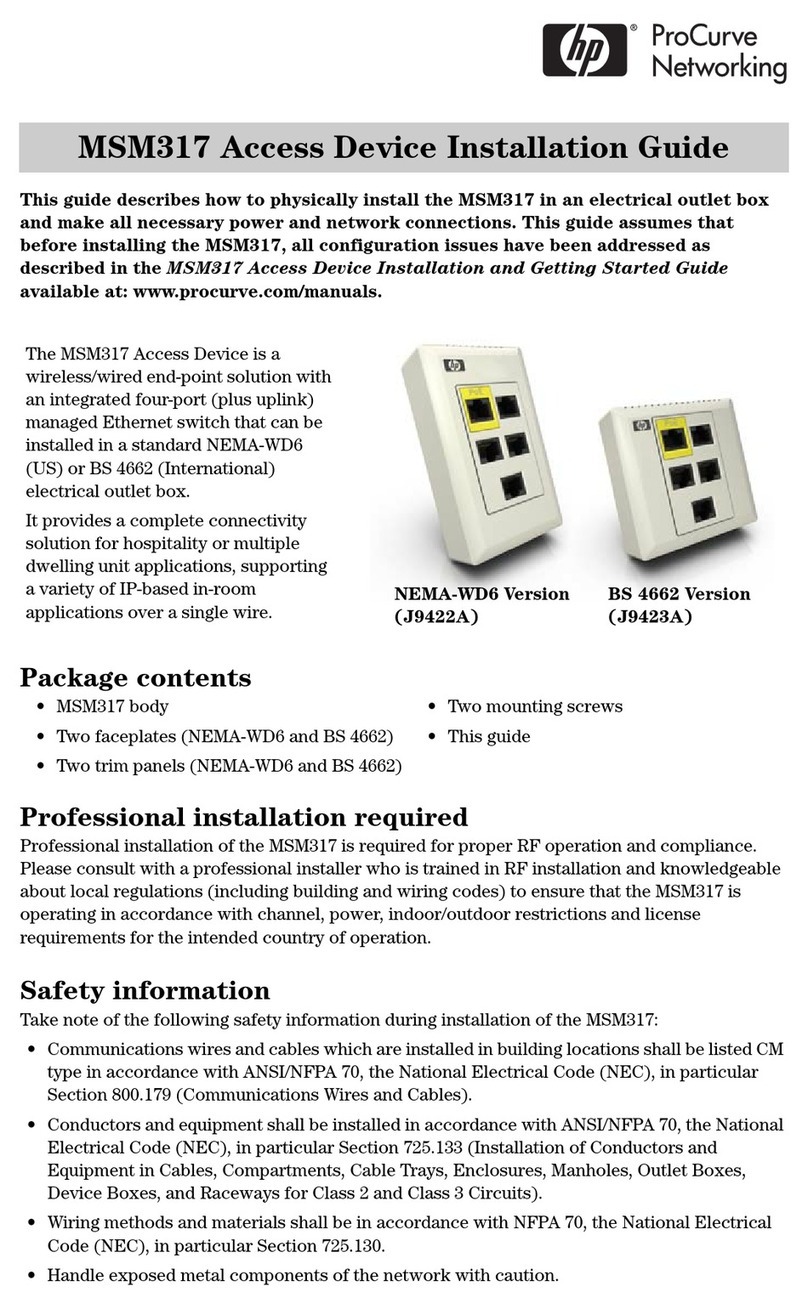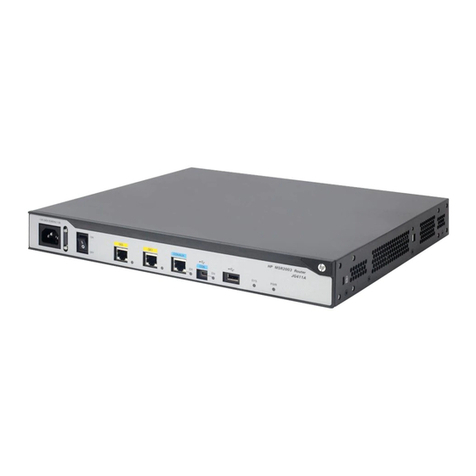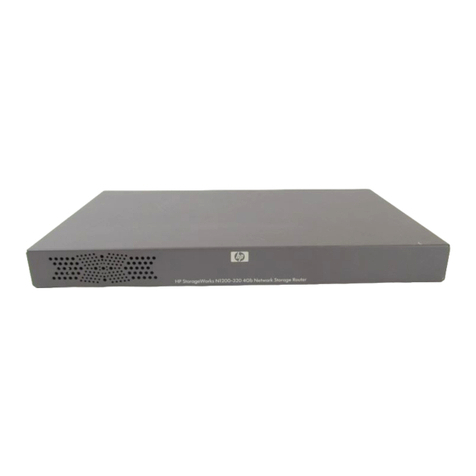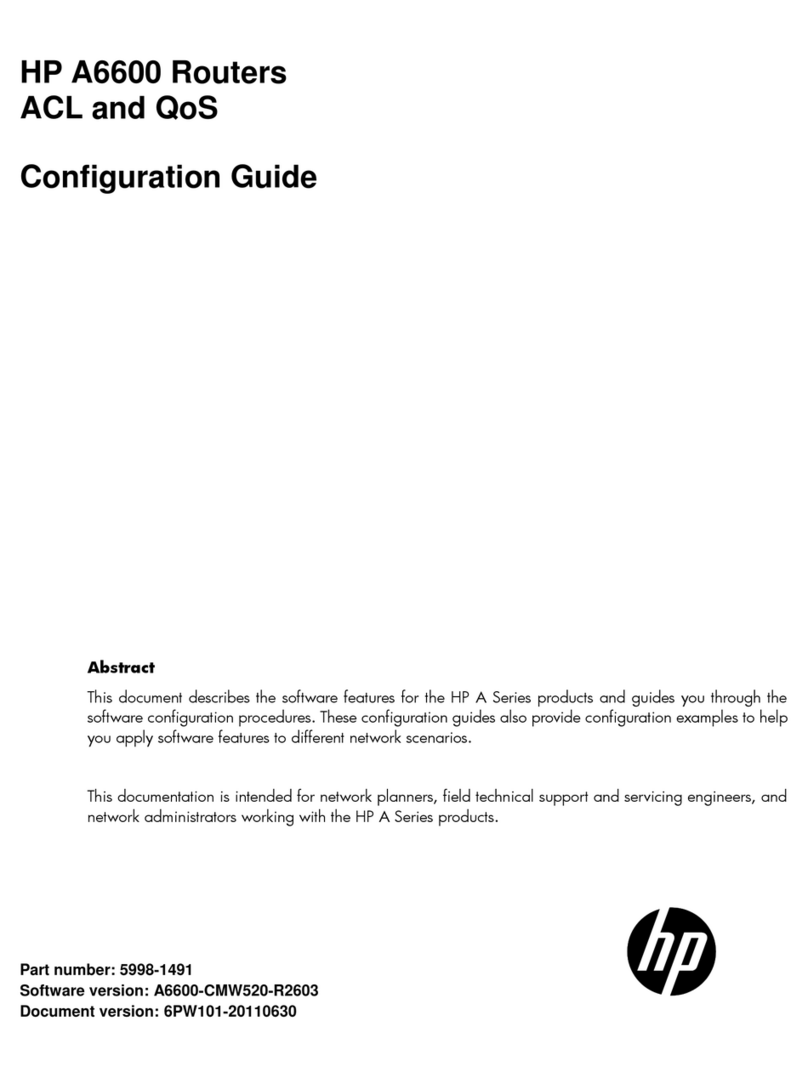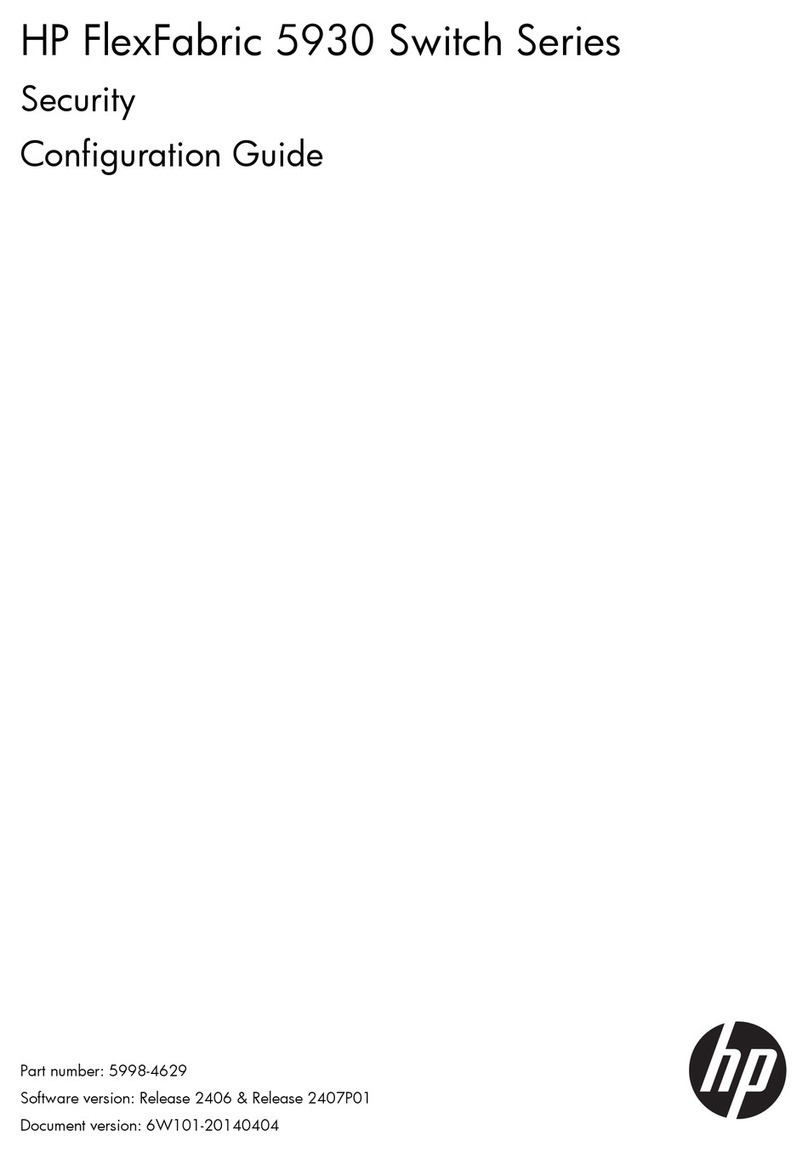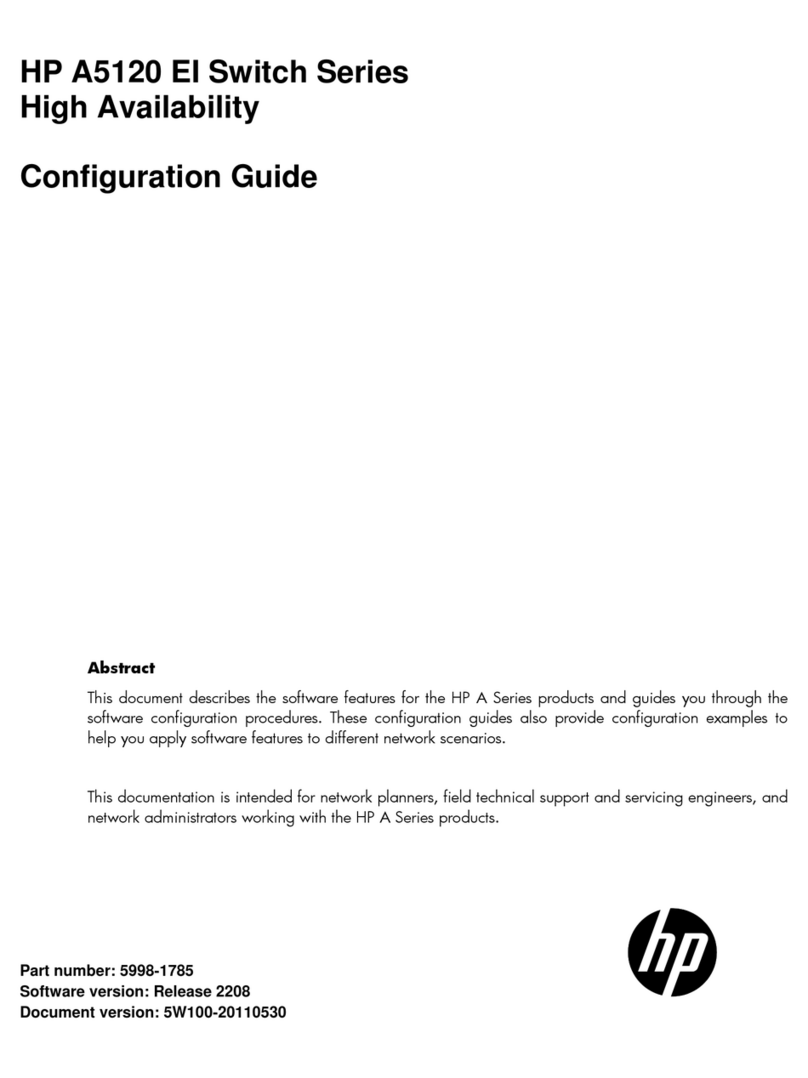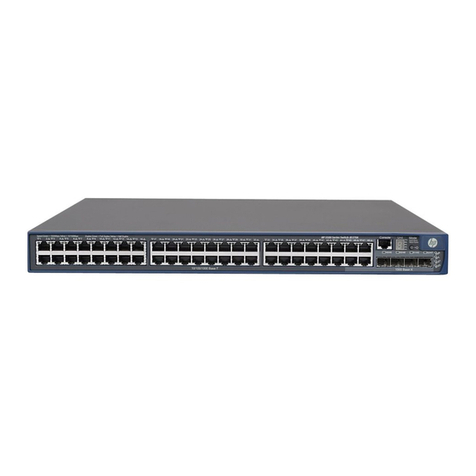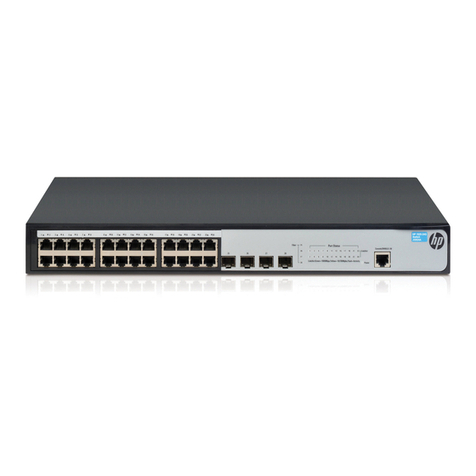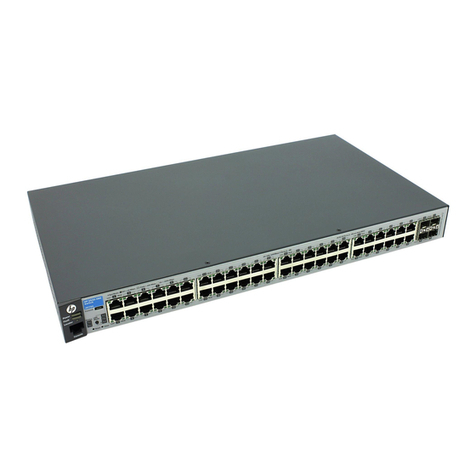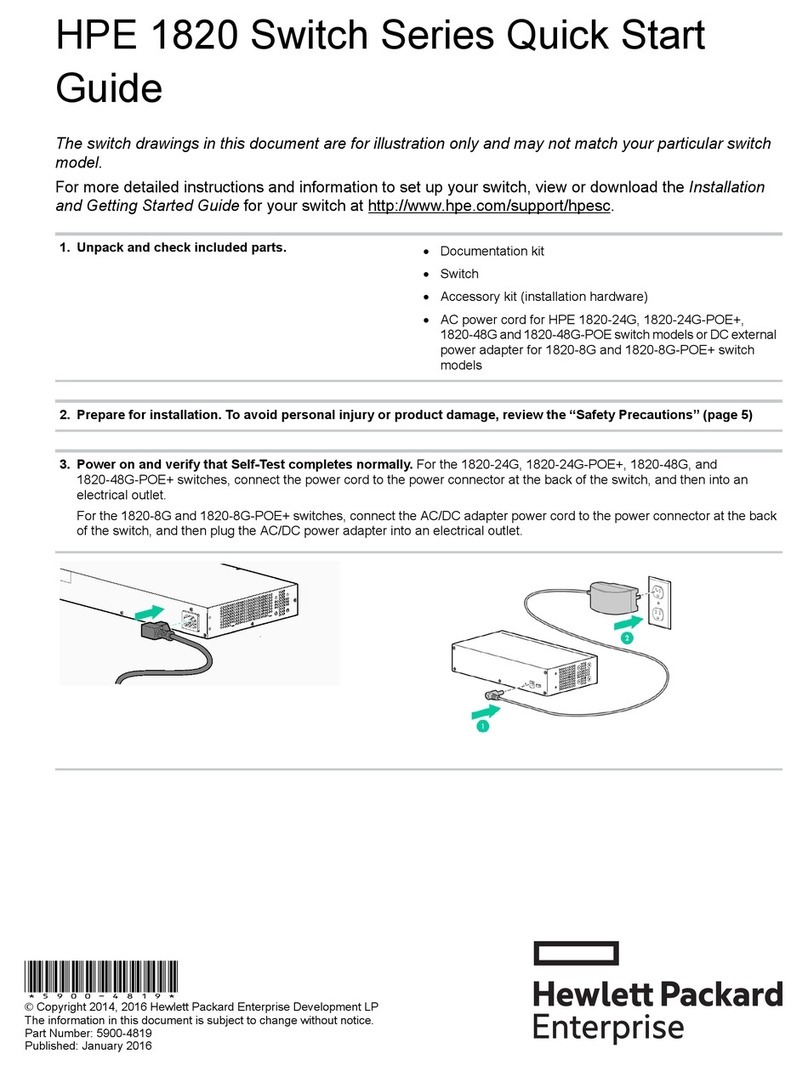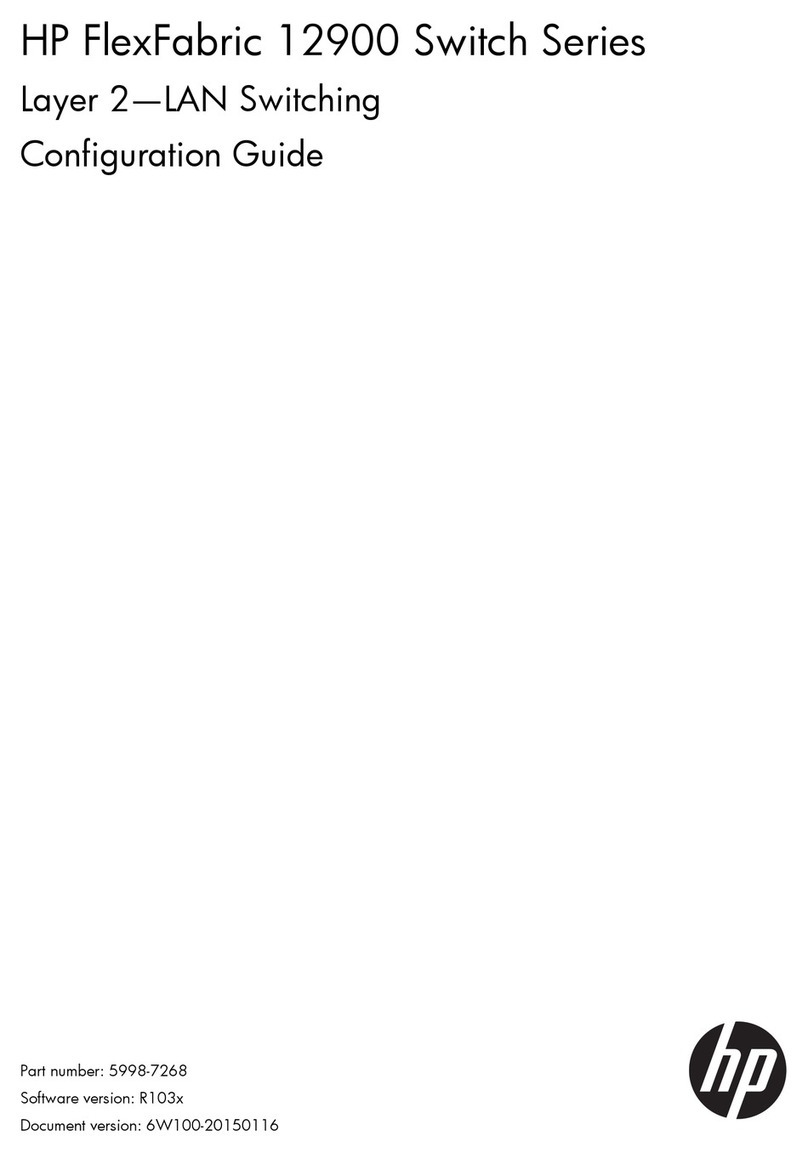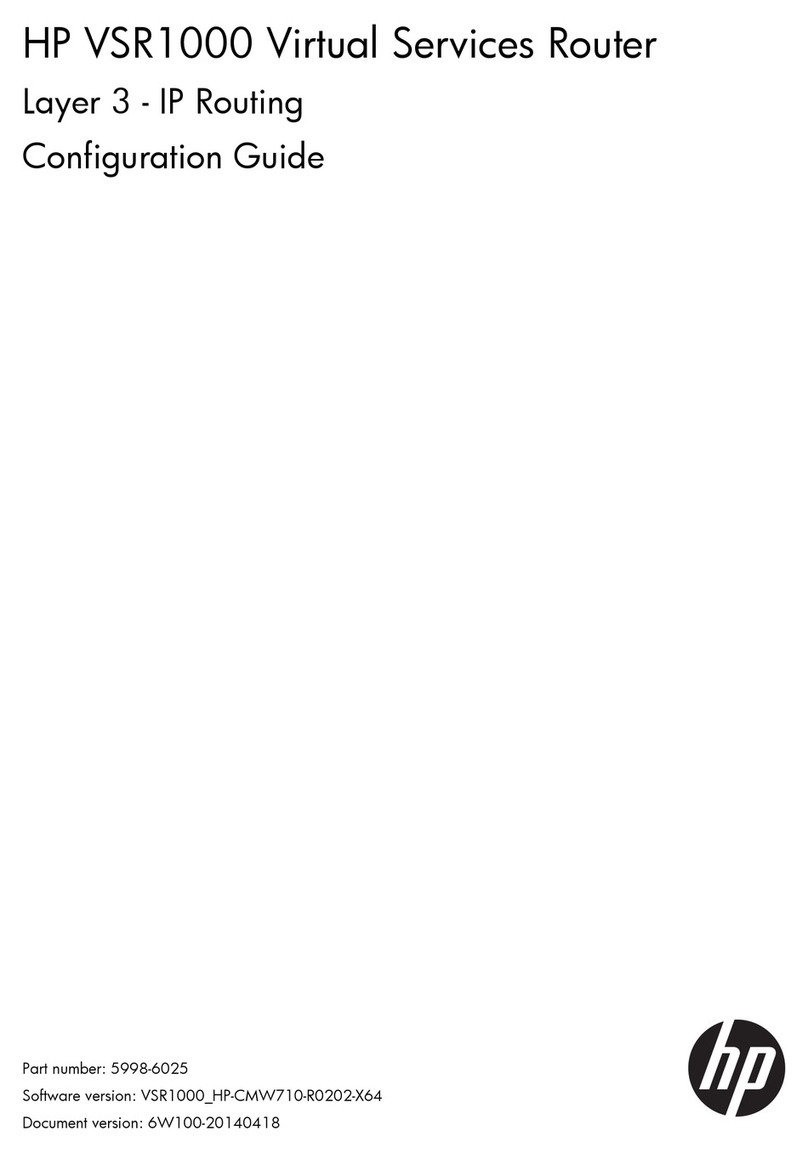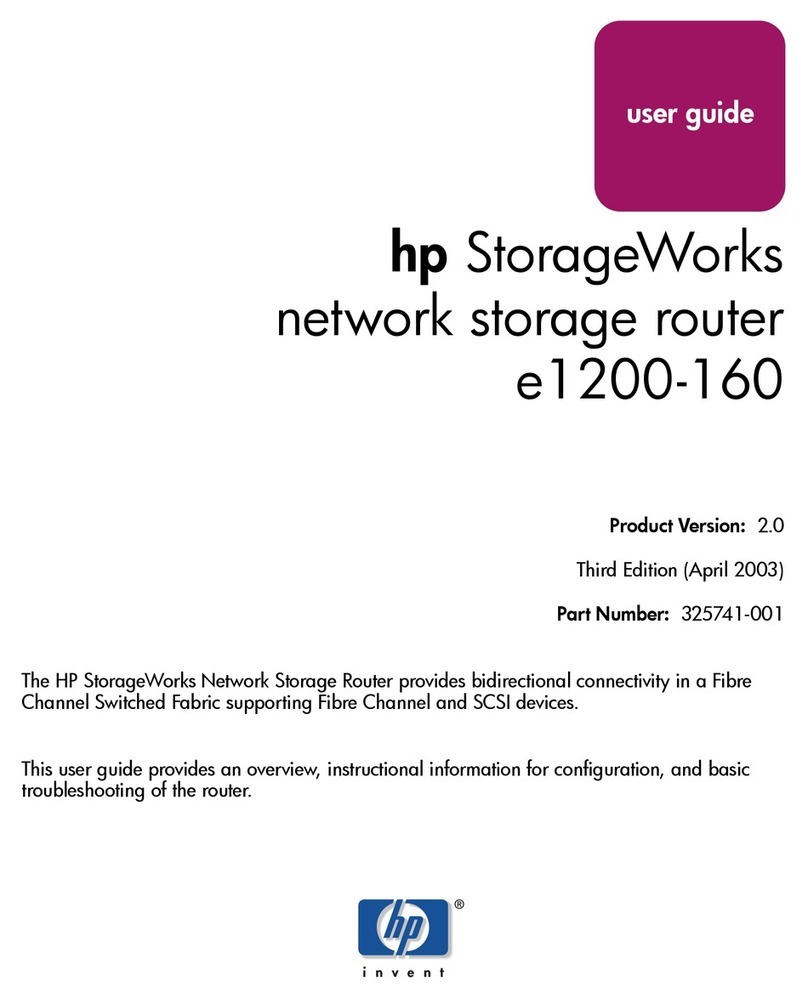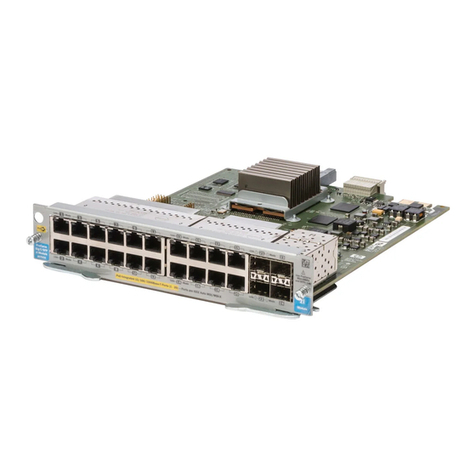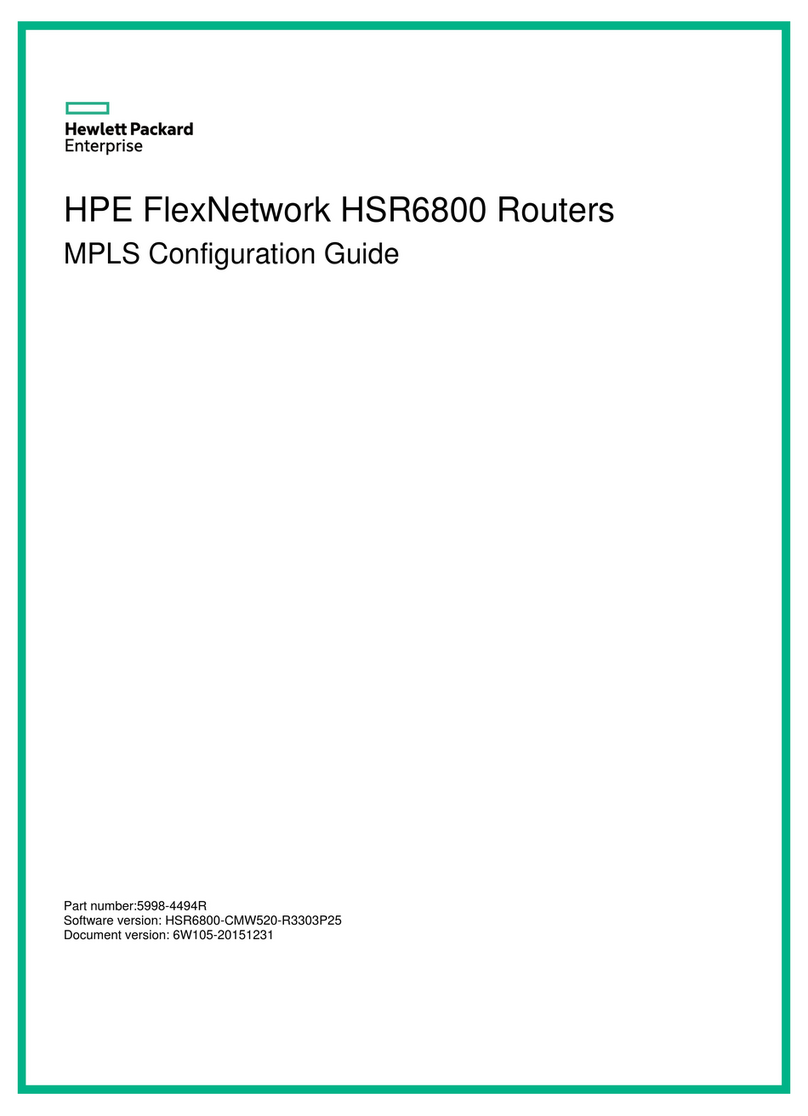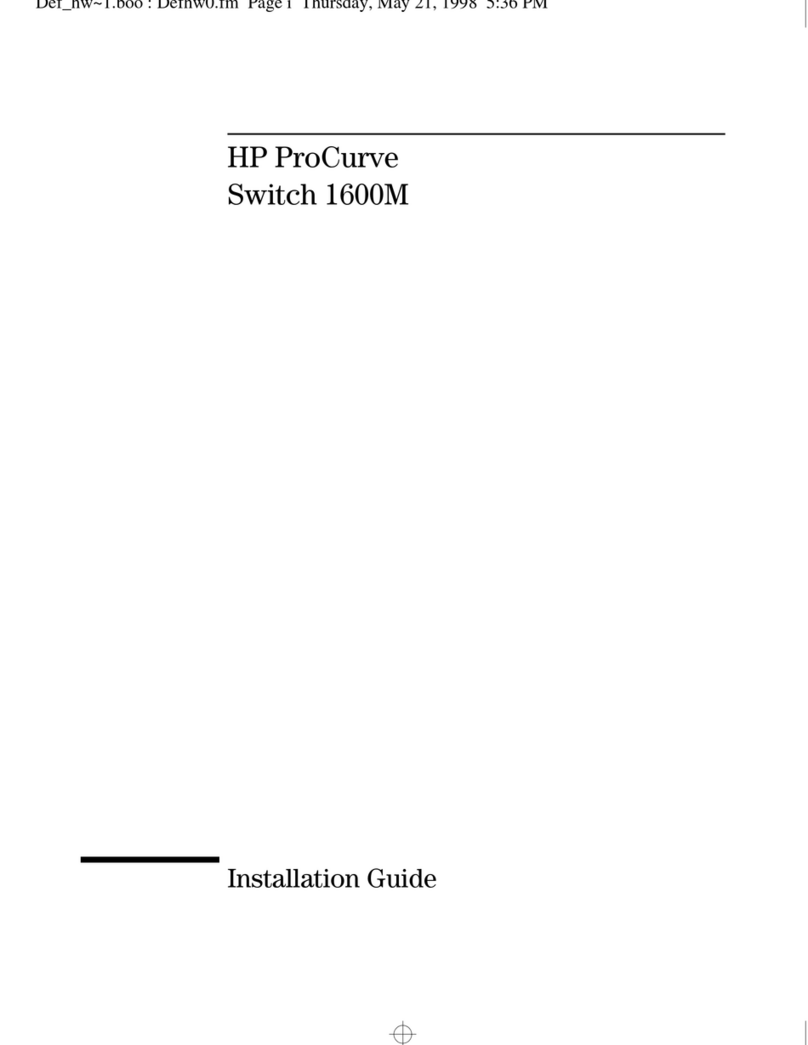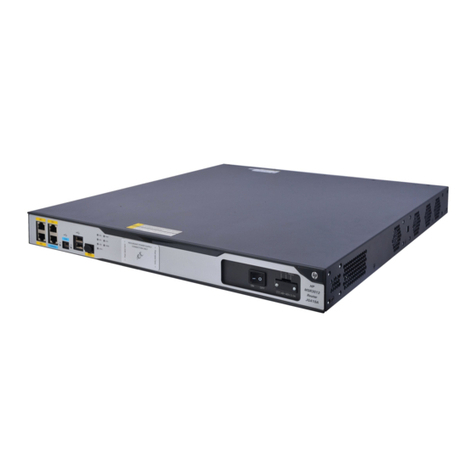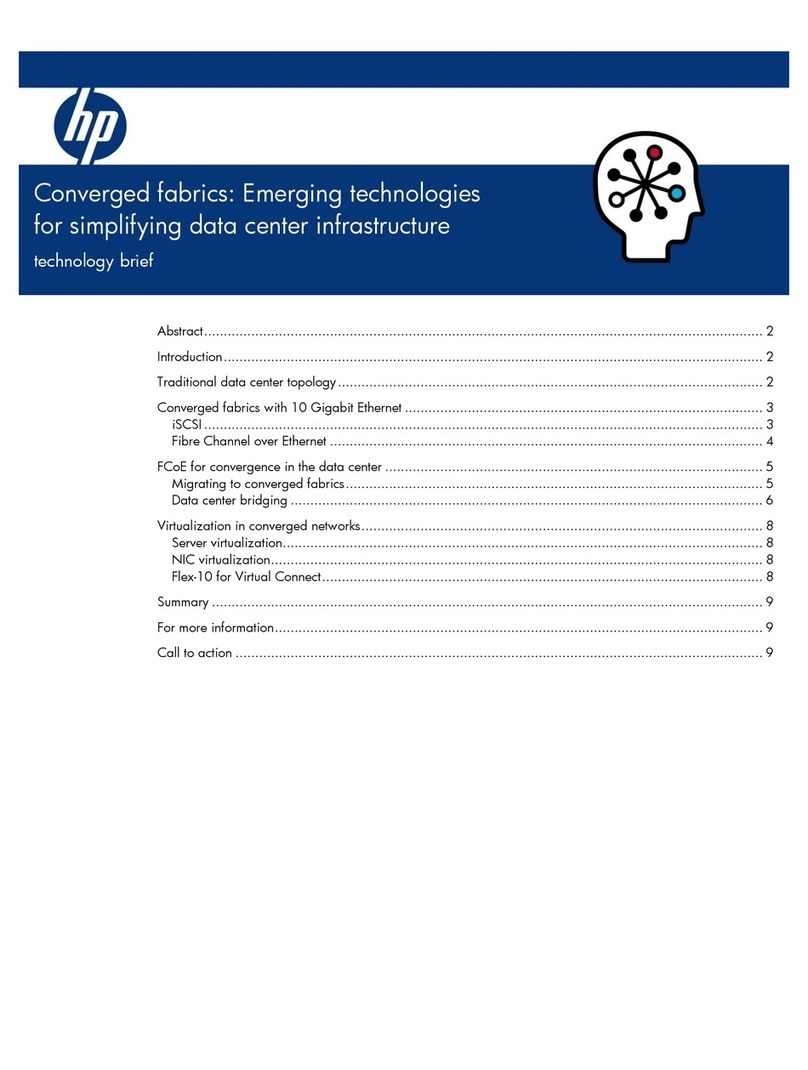
iii
Layer 2 static aggregation configuration example···························································································· 50
Layer 2 dynamic aggregation configuration example······················································································ 52
Configuring port isolation··········································································································································55
Assigning a port to the isolation group ······················································································································· 55
Displaying and maintaining the isolation group ········································································································ 55
Port isolation configuration example···························································································································· 56
Configuring spanning tree protocols ························································································································57
STP ··················································································································································································· 57
STP protocol packets ············································································································································· 57
Basic concepts in STP············································································································································ 58
Calculation process of the STP algorithm ··········································································································· 59
RSTP················································································································································································· 64
PVST················································································································································································· 64
MSTP················································································································································································ 64
STP, RSTP, and PVST limitations ·························································································································· 64
MSTP features ························································································································································ 64
MSTP basic concepts ············································································································································ 65
How MSTP works ·················································································································································· 69
Implementation of MSTP on devices···················································································································· 69
Protocols and standards ················································································································································ 69
Spanning tree configuration task list···························································································································· 70
Configuration restrictions and guidelines ··········································································································· 70
STP configuration task list····································································································································· 70
RSTP configuration task list··································································································································· 71
PVST configuration task list··································································································································· 72
MSTP configuration task list ································································································································· 73
Setting the spanning tree mode···································································································································· 74
Configuring an MST region ·········································································································································· 75
Configuration restrictions and guidelines ··········································································································· 75
Configuration procedure ······································································································································ 75
Configuring the root bridge or a secondary root bridge ·························································································· 76
Configuration restrictions and guidelines ··········································································································· 76
Configuring the current device as the root bridge of a specific spanning tree·············································· 76
Configuring the current device as a secondary root bridge of a specific spanning tree······························ 77
Configuring the device priority····································································································································· 77
Configuring the maximum hops of an MST region ···································································································· 77
Configuring the network diameter of a switched network························································································· 78
Configuring spanning tree timers································································································································· 78
Configuration restrictions and guidelines ··········································································································· 79
Configuration procedure ······································································································································ 79
Configuring the timeout factor ······································································································································ 80
Configuring the maximum port rate····························································································································· 80
Configuring edge ports ················································································································································· 81
Configuration restrictions and guidelines ··········································································································· 81
Configuration procedure ······································································································································ 81
Configuring path costs of ports ···································································································································· 81
Specifying a standard for the device to use when it calculates the default path cost ··································· 82
Configuring path costs of ports···························································································································· 83
Configuration example ········································································································································· 84
Configuring the port priority ········································································································································· 84
Configuring the port link type······································································································································· 85
Configuration restrictions and guidelines ··········································································································· 85
Configuration procedure ······································································································································ 85
